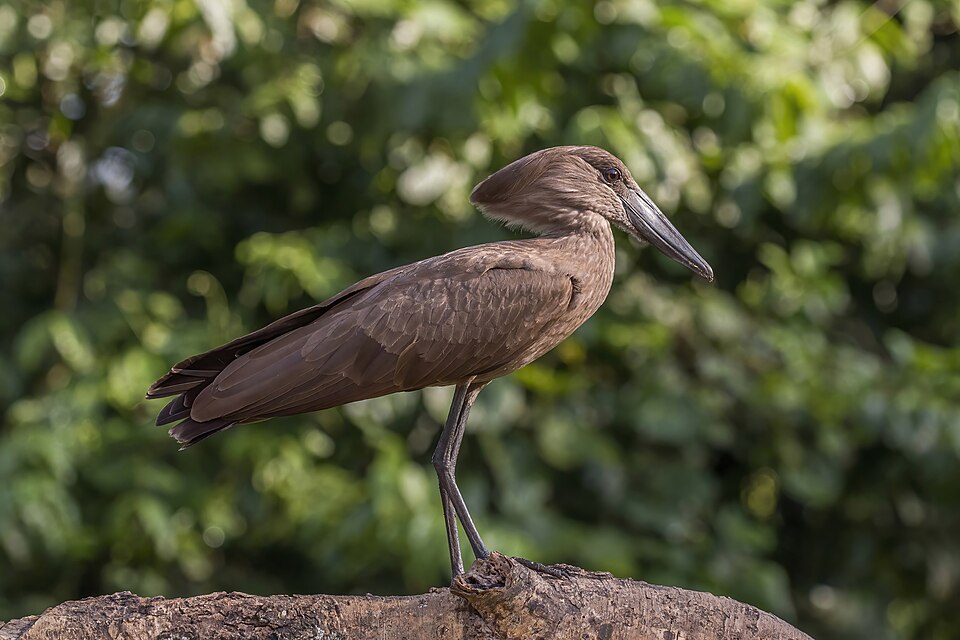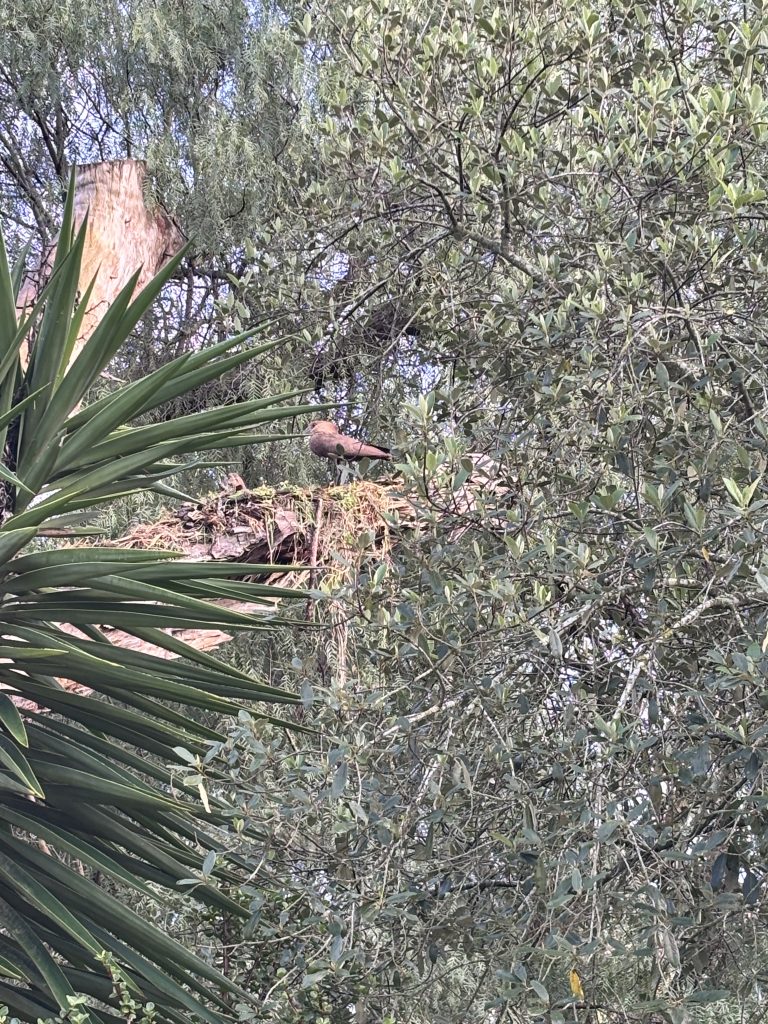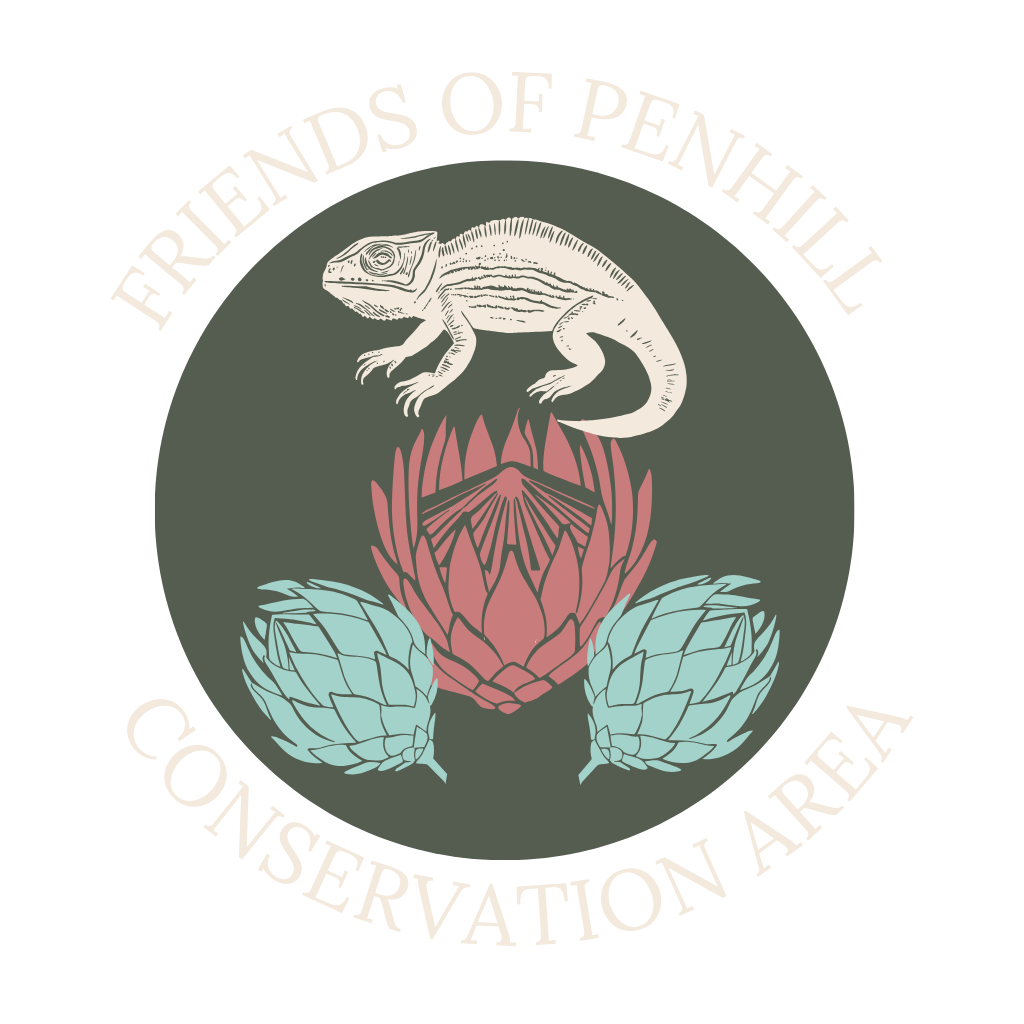A nesting pair demonstrates why community conservation extends beyond boundaries


Wildlife has a wonderful way of reminding us that conservation isn’t confined to designated areas. This month, we’ve been delighted by the arrival of two remarkable neighbours – a pair of Hamerkops that have chosen to build their impressive nest in a tree just beyond our conservation area’s boundary.
Master Builders in Action
Hamerkops (Scopus umbretta) are extraordinary architects. These medium-sized wading birds, easily recognisable by their distinctive hammer-shaped heads, construct some of the most impressive nests in the avian world. Built from sticks, mud, and various debris, their dome-shaped homes can measure up to 2 metres across and weigh more than 50 kilograms.
What makes these nests even more remarkable is their longevity and community value. A single nest may house multiple generations of Hamerkops and often provides shelter for other bird species, small mammals, and reptiles. They’re essentially apartment buildings of the bird world.
Conservation Beyond Boundaries
Observing our new neighbours has been a powerful reminder of why the Friends of Penhill Conservation Area’s mission extends beyond our formal boundaries. We’ve watched one of the birds make multiple trips to our driveway, carefully selecting materials for their construction project. This behaviour perfectly illustrates how wildlife moves freely across landscapes, requiring connected habitats and community support to thrive.
The presence of nesting Hamerkops near our conservation area validates our approach to environmental stewardship. By protecting and maintaining the Penhill Conservation Area, we’re not just preserving one isolated pocket of nature – we’re contributing to a larger network of habitat that supports biodiversity throughout our region.
Cultural and Ecological Significance
In many African cultures, Hamerkops hold special significance and are often considered birds of good fortune. From an ecological perspective, they play important roles in wetland ecosystems, helping control insect and small fish populations. Their presence indicates healthy aquatic environments – something we work hard to maintain in our conservation area.
Community Conservation in Practice
This nesting pair represents exactly what we hope to achieve through community conservation. When we protect natural areas, maintain indigenous vegetation, and create wildlife-friendly spaces, we extend an invitation to the broader ecosystem. Birds like these Hamerkops respond by choosing our area as safe habitat for their most vulnerable life stages.
Their choice to nest so close to our conservation area demonstrates the ripple effects of environmental protection. Every indigenous plant we preserve, every invasive species we remove, and every habitat we restore contributes to a larger network that supports wildlife throughout our community.
How You Can Support Wildlife Corridors
Inspired by our feathered neighbours? Here’s how you can help create and maintain wildlife corridors:
– Join FPCA as a member or volunteer to directly support habitat conservation
– Plant indigenous species in your garden to provide food and shelter for native wildlife
– Reduce pesticide use to protect insects that form the base of food webs
– Support conservation organisations working to protect interconnected habitats
– Share wildlife sightings on platforms like iNaturalist to contribute to scientific knowledge
Looking Forward
We’ll continue monitoring our Hamerkop neighbours and documenting their nesting success. Their presence reminds us that conservation work creates value far beyond what we can measure – it provides homes, supports biodiversity, and connects us more deeply to the natural world around us.
As we move forward with our mission to preserve and protect the Penhill Conservation Area, we’re inspired by these master builders who’ve chosen to call our neighbourhood home. They’re living proof that when we protect nature, nature responds with trust, presence, and the continuation of life cycles that have played out for thousands of years.
Want to join us in supporting wildlife like our Hamerkop neighbours? Visit our How You Can Help page to learn about membership, volunteering, and donation opportunities.

Leave a Reply